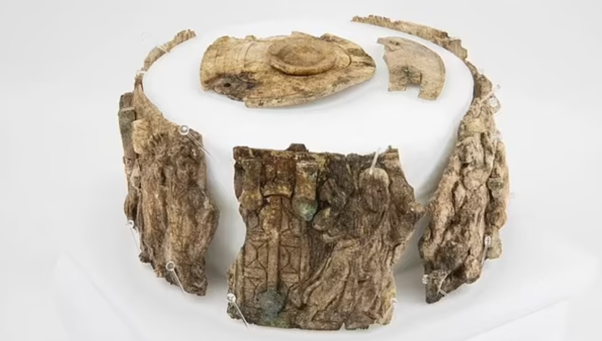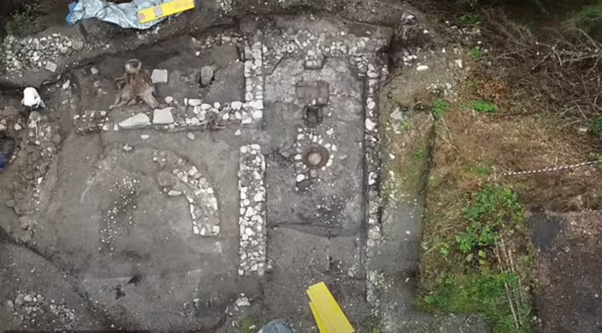Archaeologists have unearthed a highly significant religious relic in Austria, adorned with Christian motifs. This extraordinary find, discovered within a marble shrine of an early church, features an ivory box dating back 1,500 years.
The box is intricately carved with scenes including Moses receiving the Ten Commandments from God on Mount Sinai, as well as imagery of saints and the ascension of Christ.
 The circular-shaped relic is a rare and valuable artifact from early Christianity, which is about 2,000 years old. Only 40 such objects have been discovered worldwide, with the last similar find occurring around 100 years ago. Gerald Grabherr, the lead archaeologist, emphasized the rarity and importance of this discovery, stating, "We know that this only happens once in an archaeologist's life as a scientist."
The circular-shaped relic is a rare and valuable artifact from early Christianity, which is about 2,000 years old. Only 40 such objects have been discovered worldwide, with the last similar find occurring around 100 years ago. Gerald Grabherr, the lead archaeologist, emphasized the rarity and importance of this discovery, stating, "We know that this only happens once in an archaeologist's life as a scientist."

The research team from the University of Innsbruck believes the relic was crafted less than a century after Roman Emperor Constantine the Great legalised Christianity with the Edict of Milan in 313 AD. This timeline suggests it was created during a transformative period when Emperor Theodosius declared Christianity the official religion of the Roman Empire in 380 AD.

The discovery was made at an excavation site of an early Christian church in the municipality of Irschen, southern Austria. This region, once part of the Roman Empire, likely hosted a pagan sanctuary before being converted into a church.
While excavating a pit-like depression where an altar once stood, the team uncovered a sealing stone. Upon removing it, they found a white marble box containing the broken ivory relic. Despite its fragmented state, the box, originally fashioned with metal and wood, remains a significant find.

The box's carvings depict bearded men in long robes, representing scenes from both the Old and New Testaments. While the team hypothesizes that the figures include Moses and Christ, the exact interpretations remain uncertain. One carving possibly shows Moses receiving the laws from God or parting the Red Sea, while another might depict Jesus' resurrection.
Dr. Barbara Kainrath, involved in the research, noted, "The head is turned in a different direction and with this representation, we can grab [God] handing over the law to Moses. A second scene that we can address well is the figure being pulled up again by a hand that sticks out of the cloud, which is the hand of God again. And here we are dealing with an ascension."
The box, likely crafted in a major urban center such as Alexandria, Ravenna, or Aquileia, was not made locally due to the lack of necessary materials. Dr. Ulrike Tochterle speculated on its condition, suggesting, "Either the pyx was already in a destroyed, broken state in the marble cube, or someone was tampering with it."
The ancient church, about 60 feet long with a marble threshold, also featured burials to the south and west. The remains of several individuals, believed to belong to the social upper class, have been recovered and are being examined at the Natural History Museum in Vienna. Researchers estimate that 200 to 300 people lived in the area during late antiquity, between the 3rd and 7th centuries AD.
(Source: Daily Mail UK)


